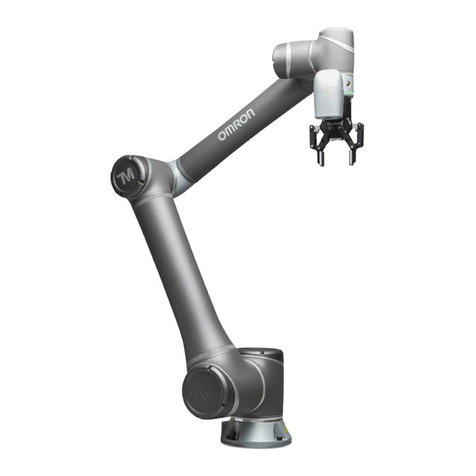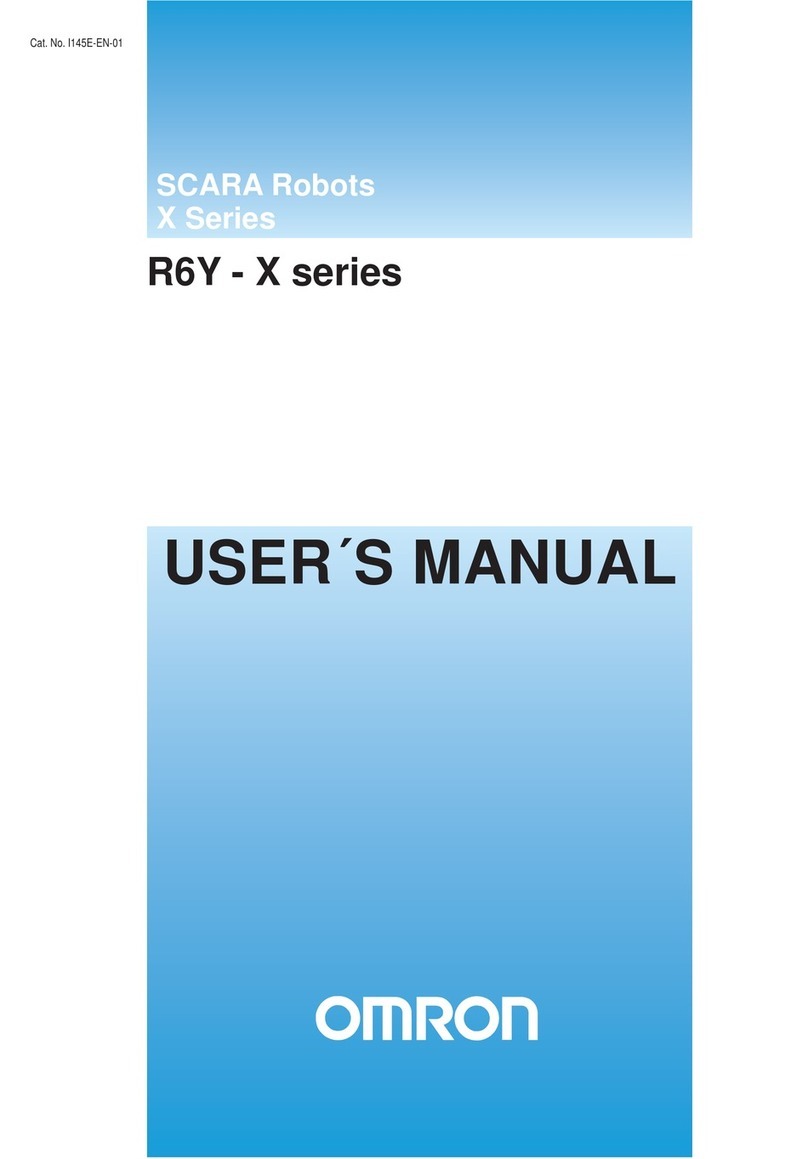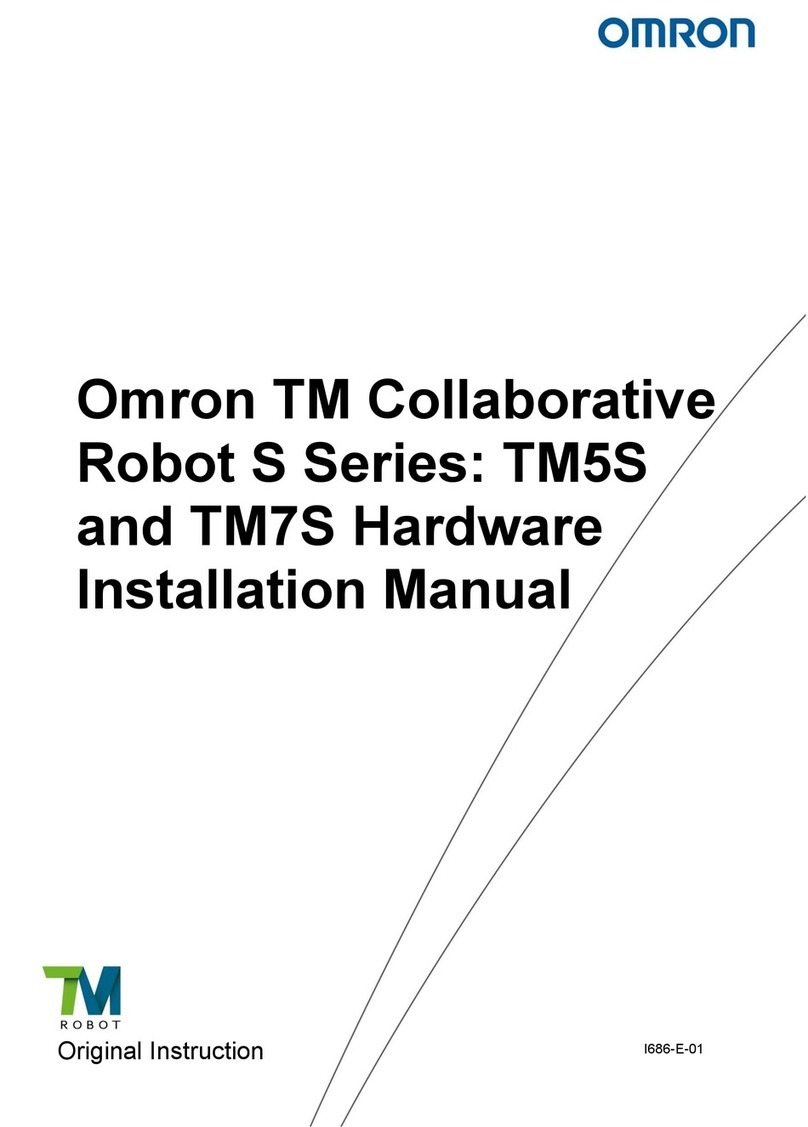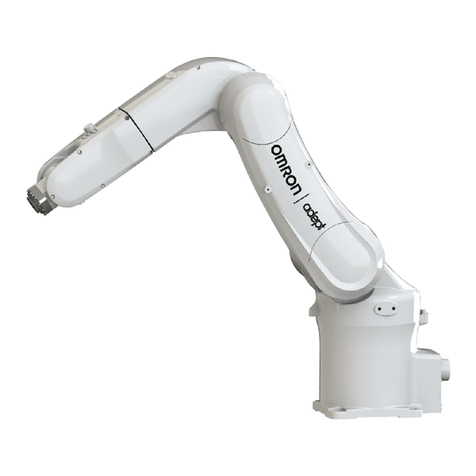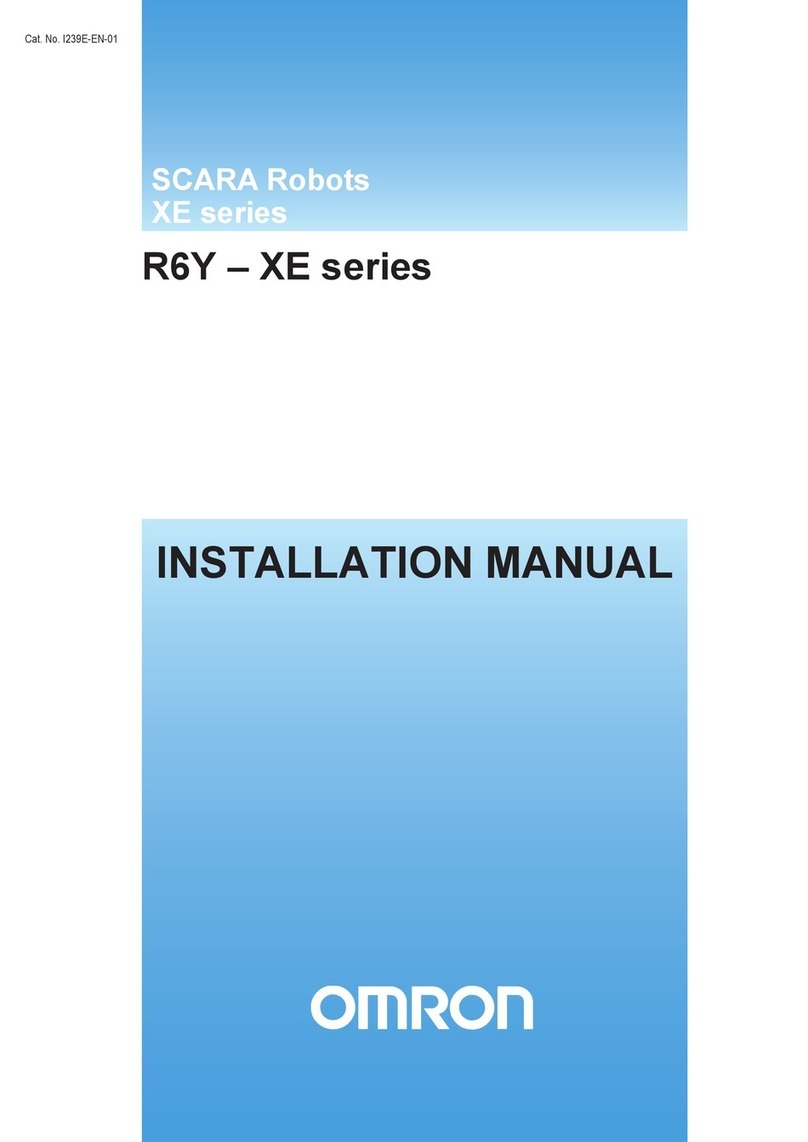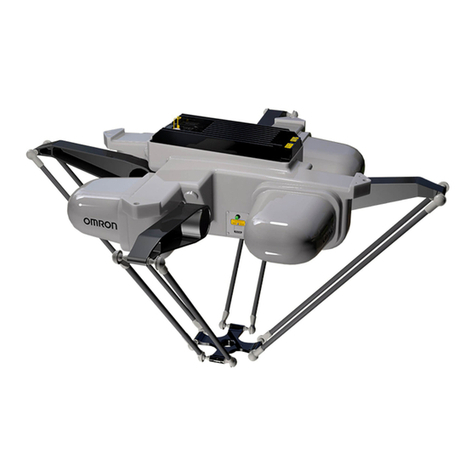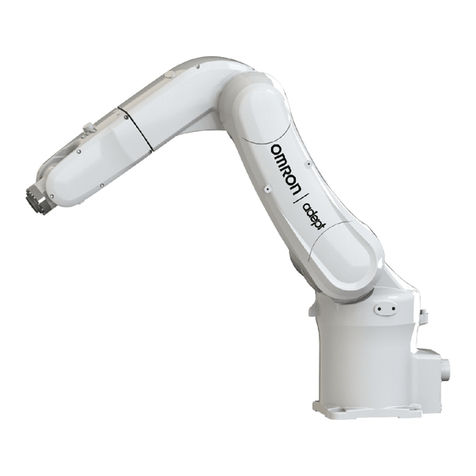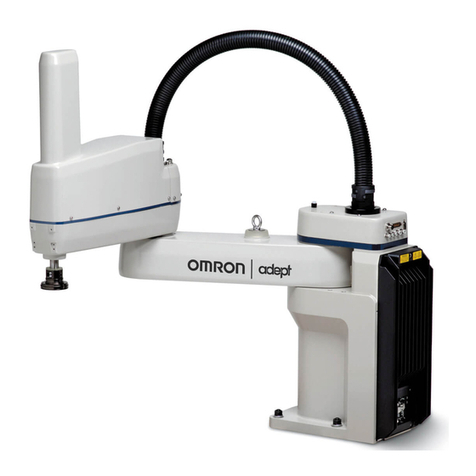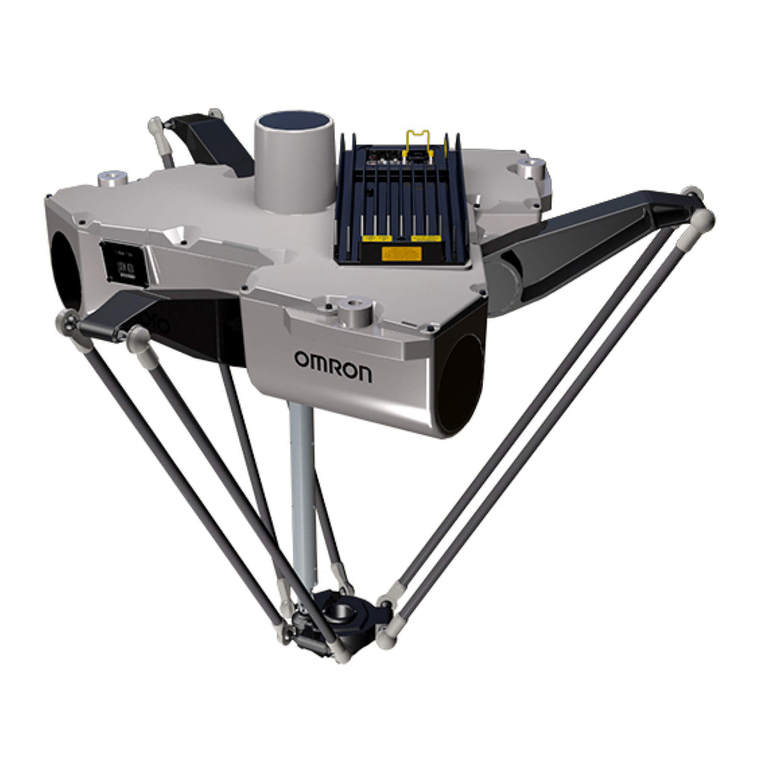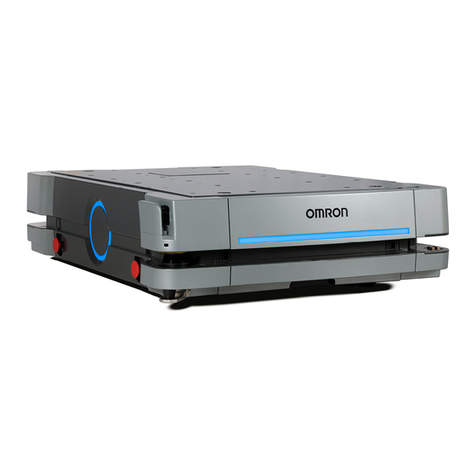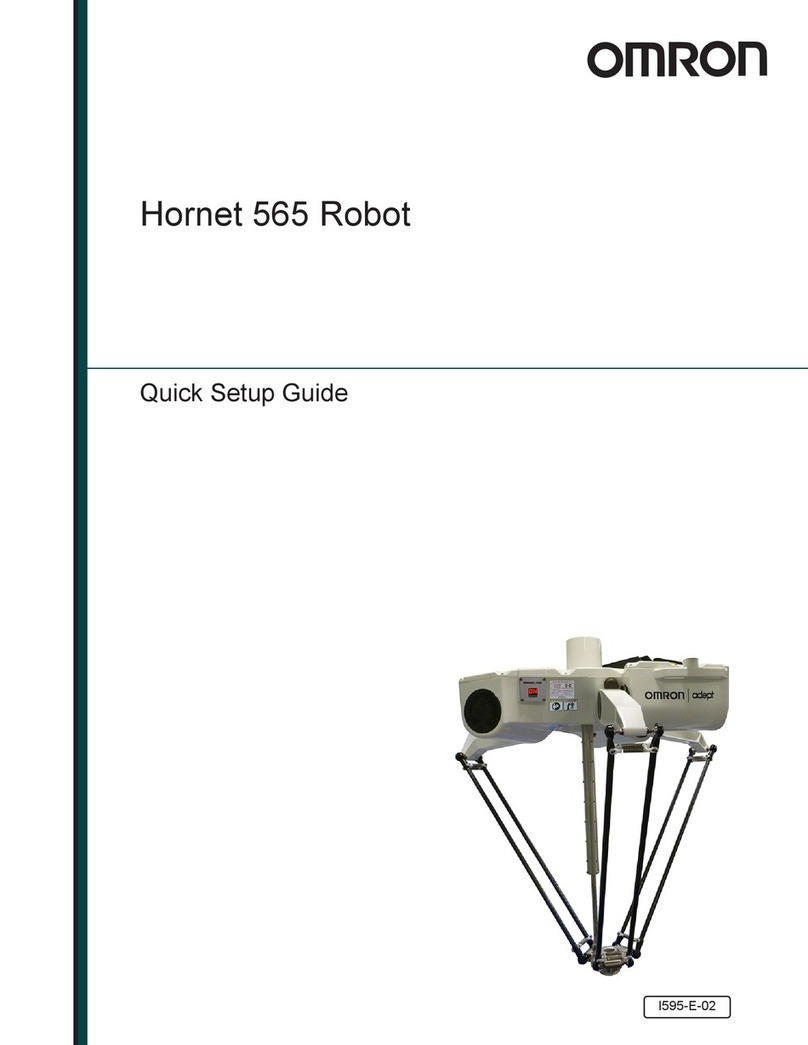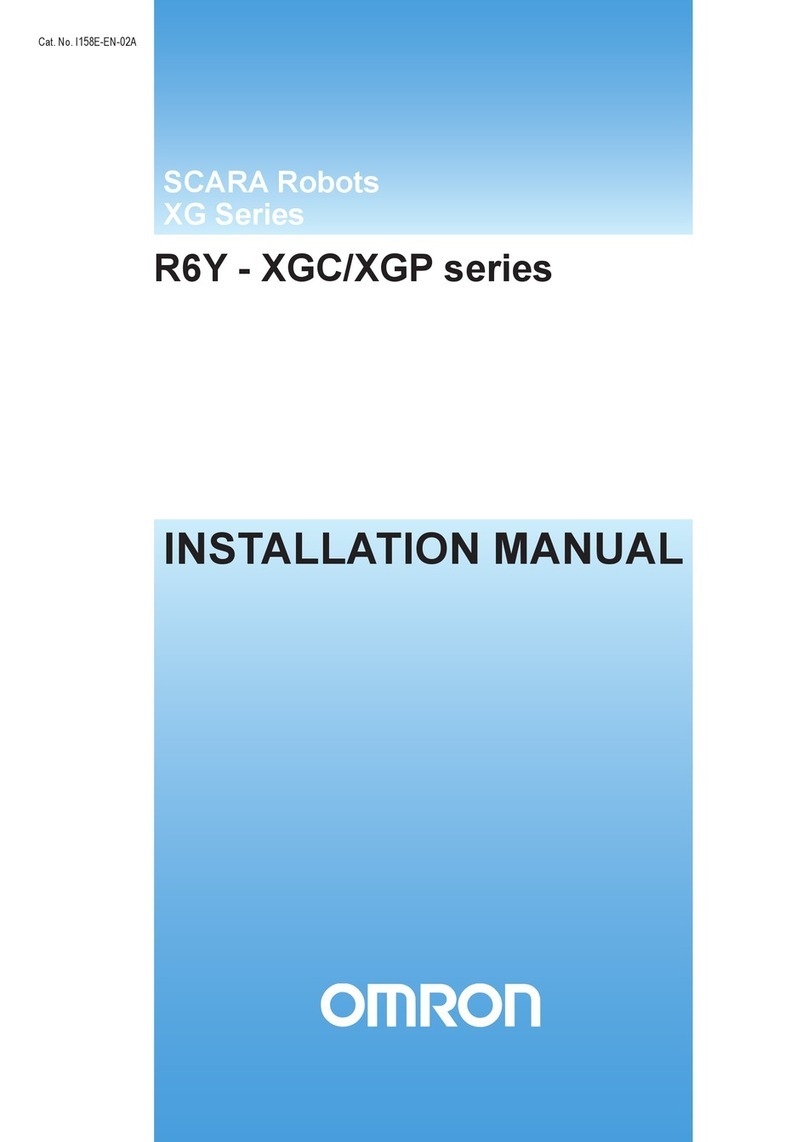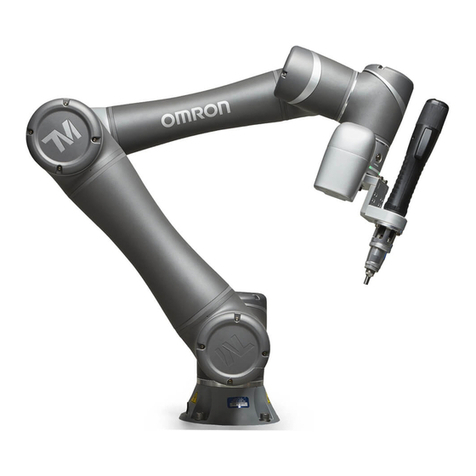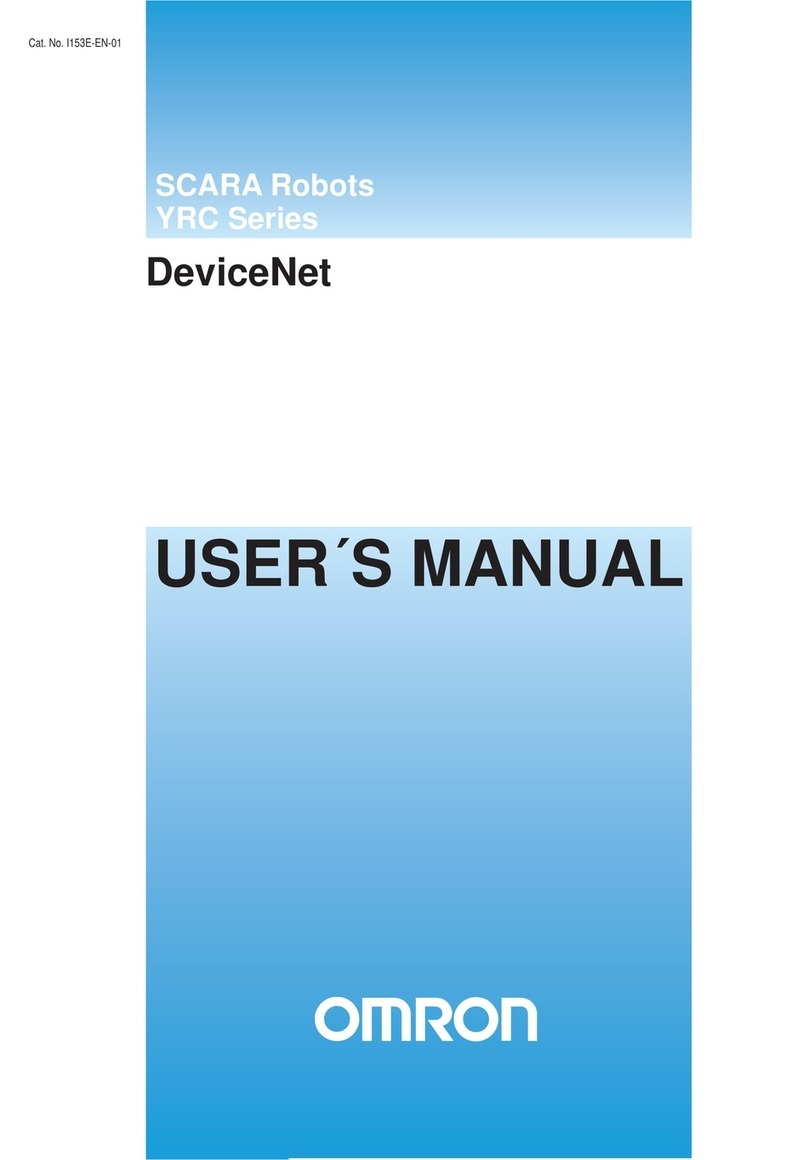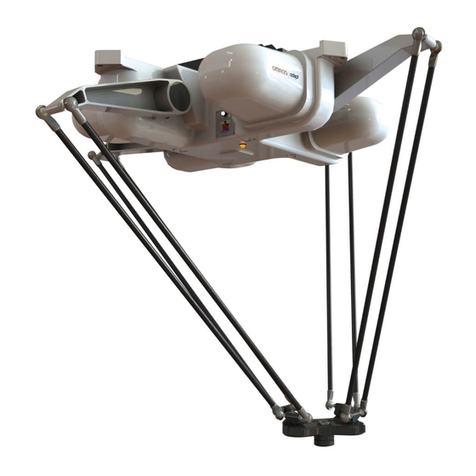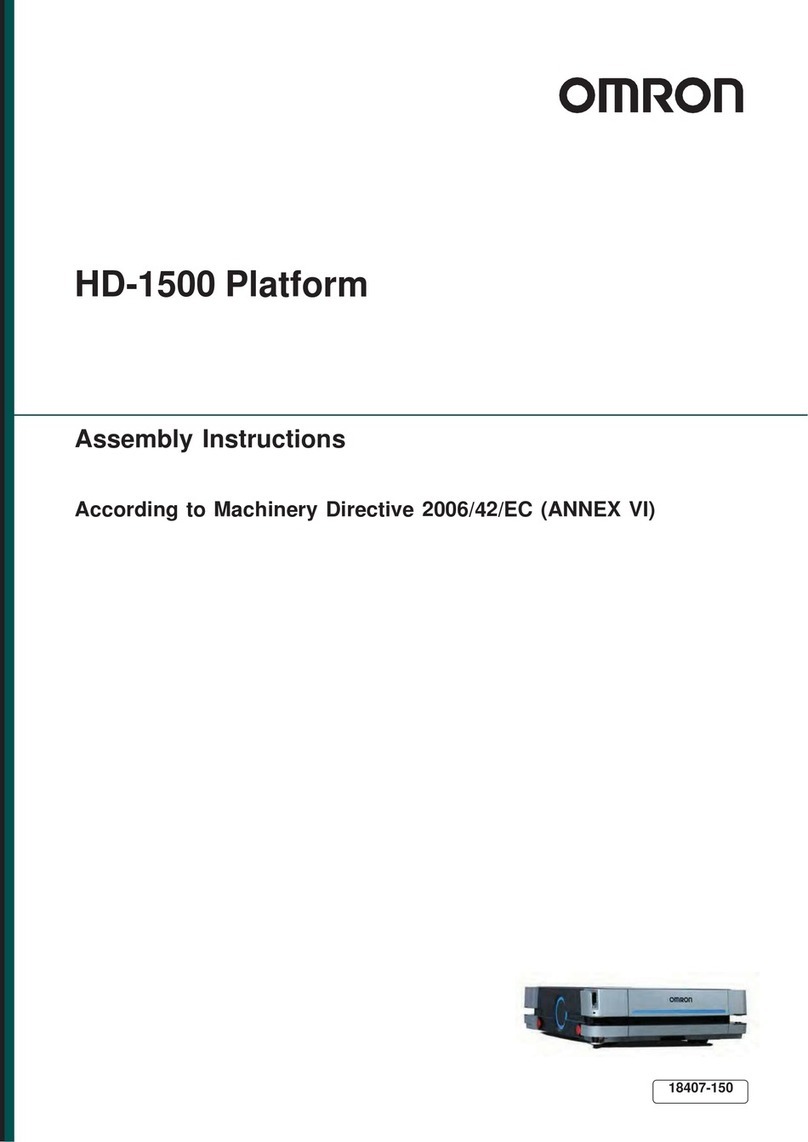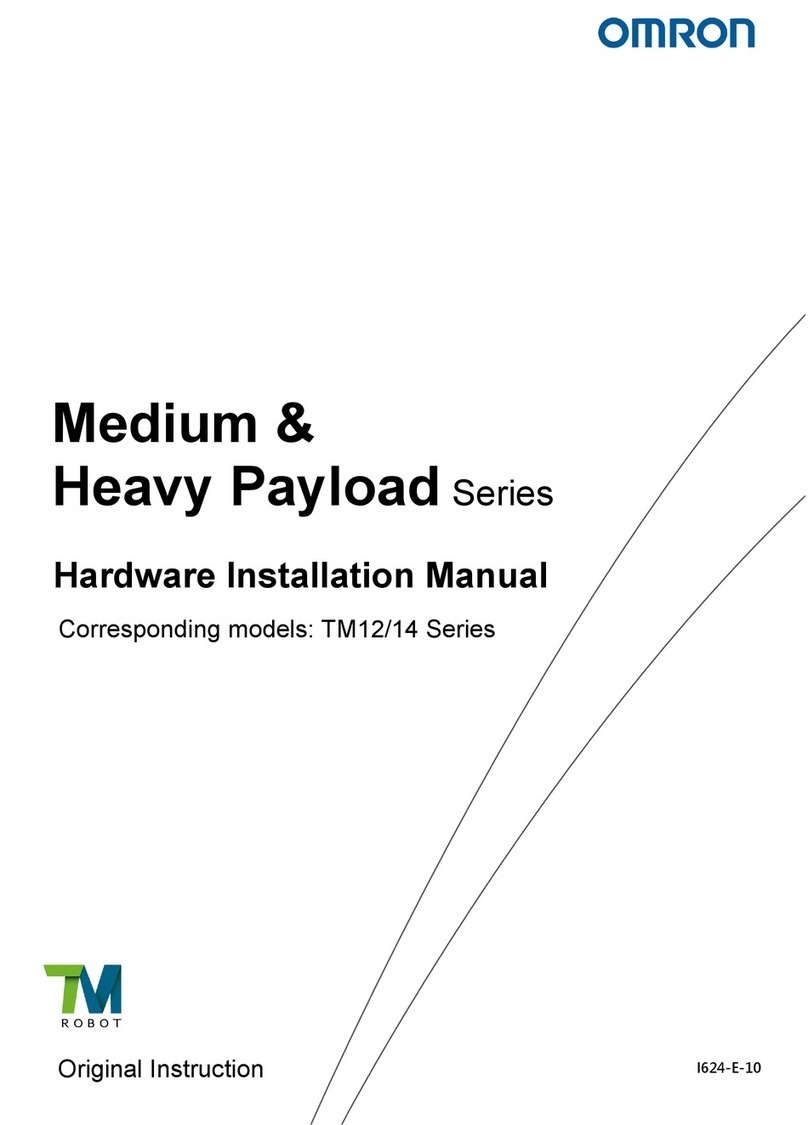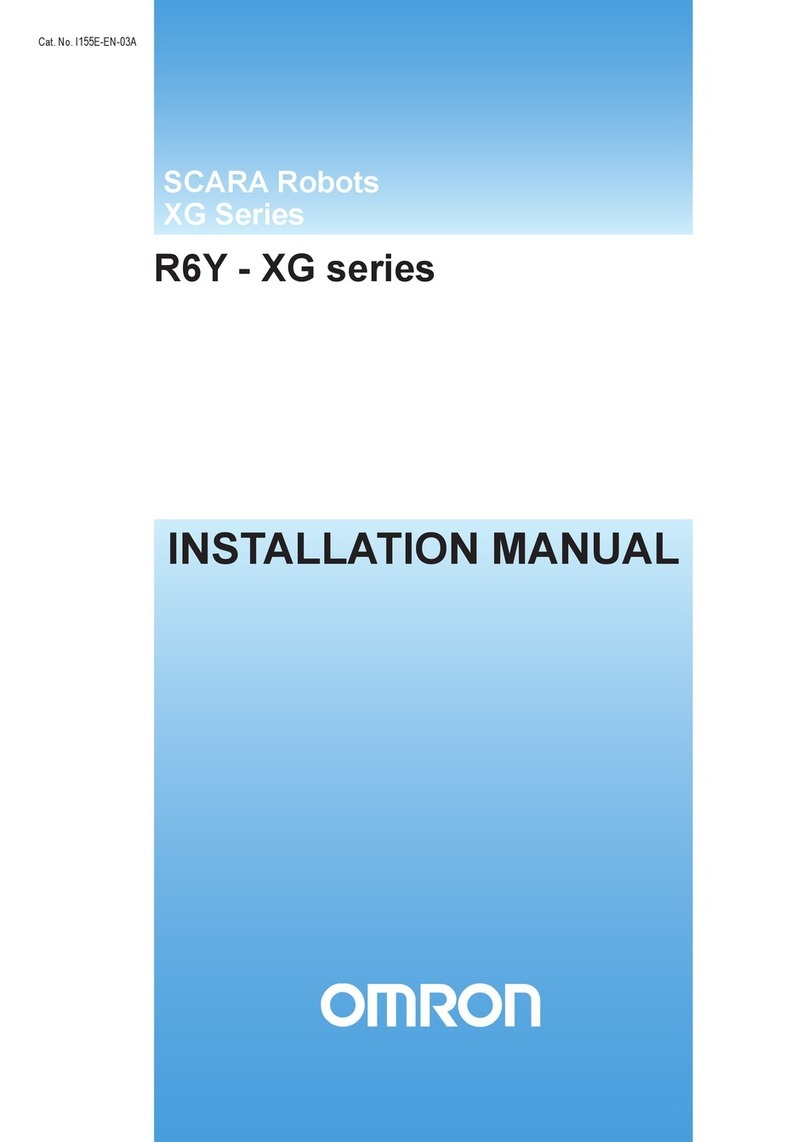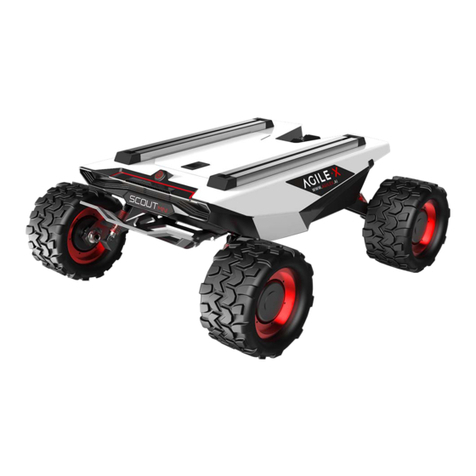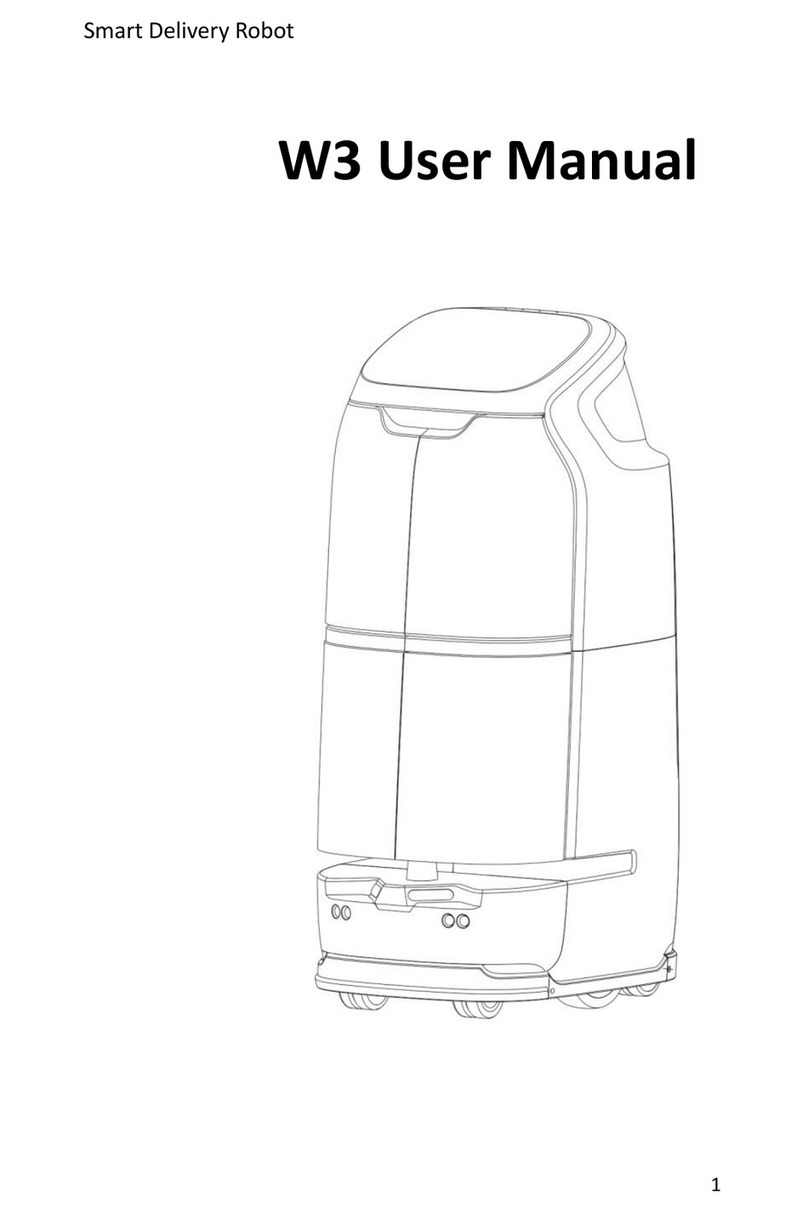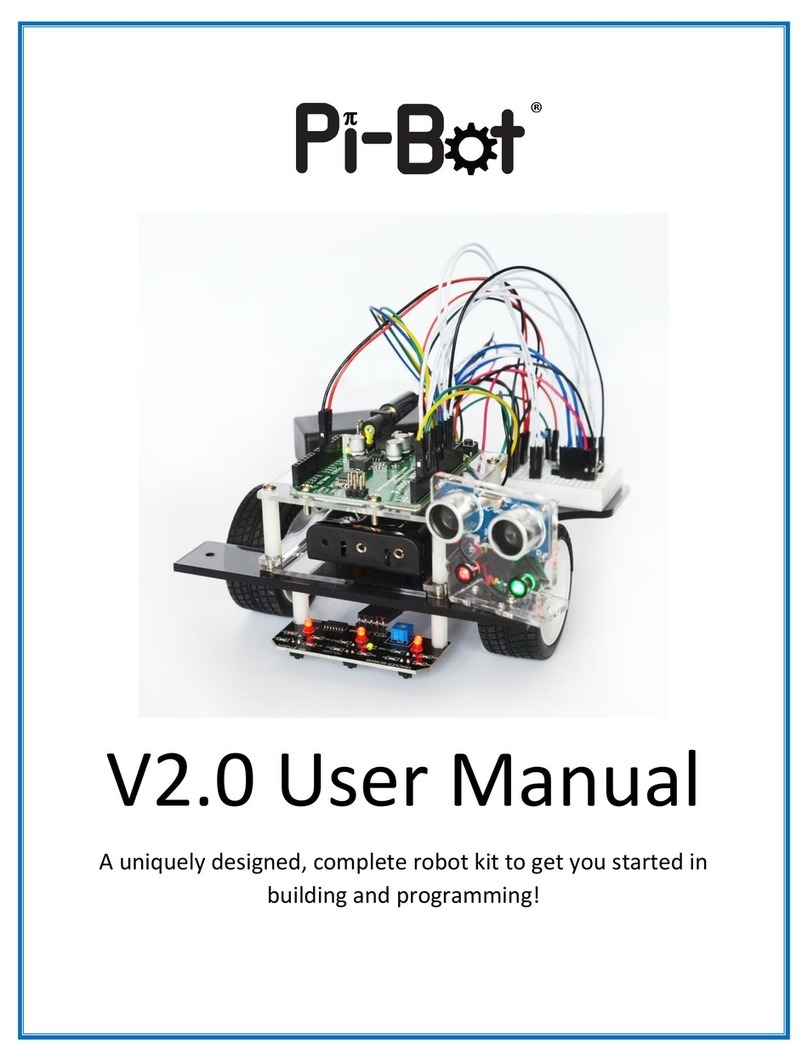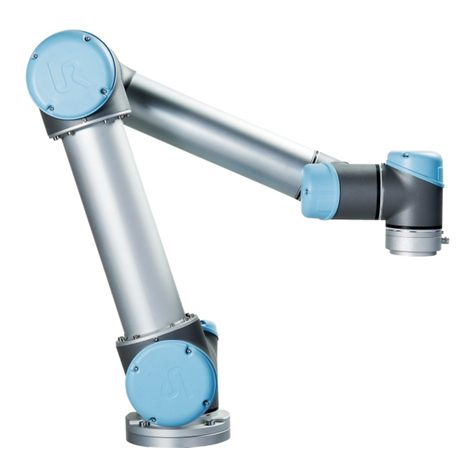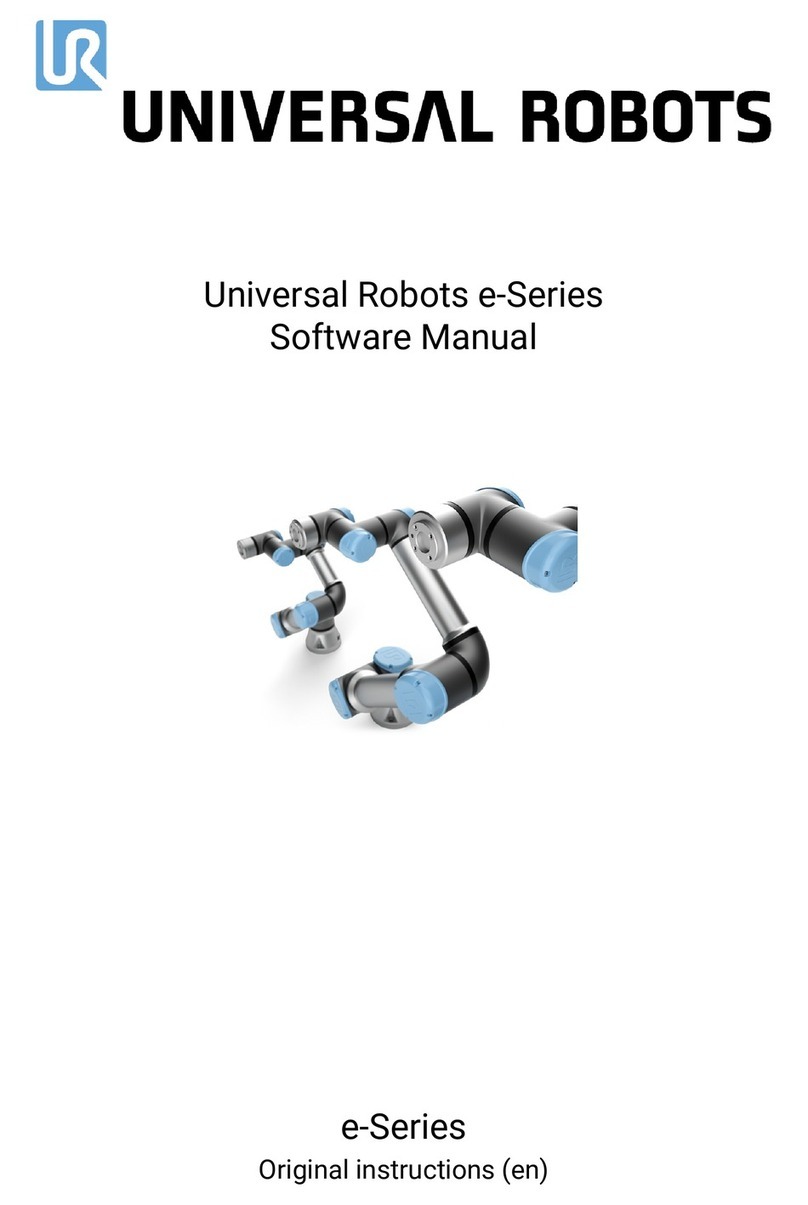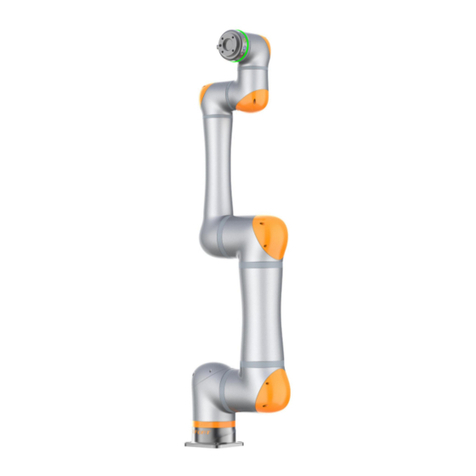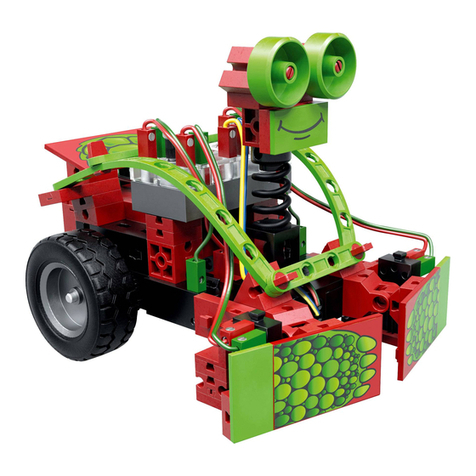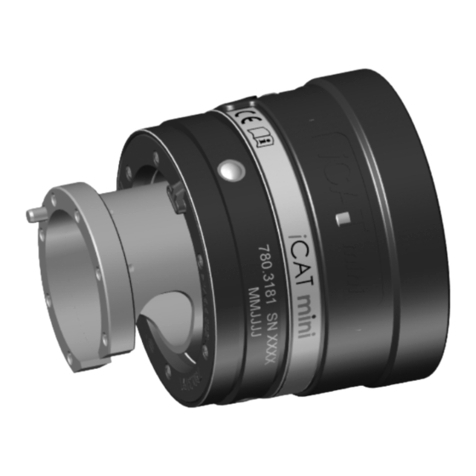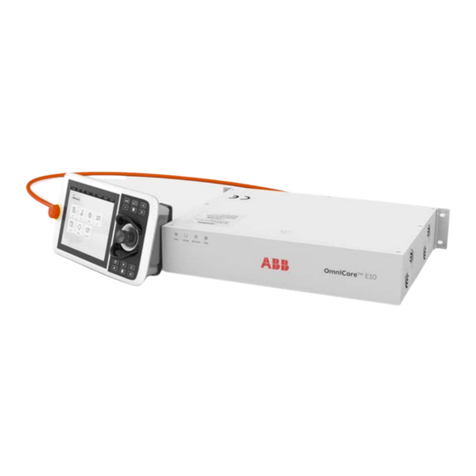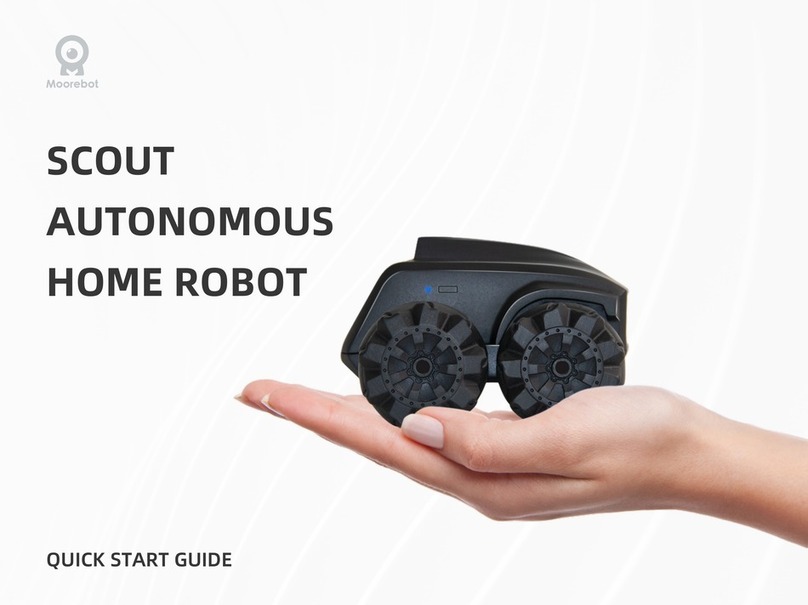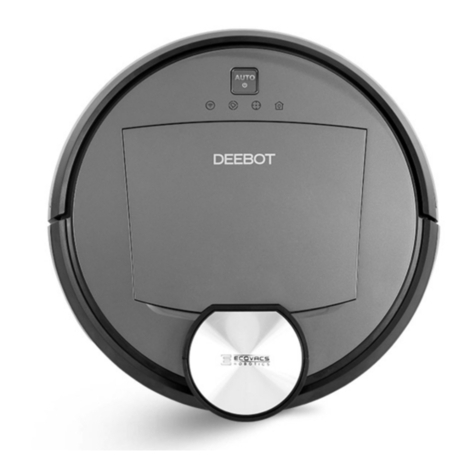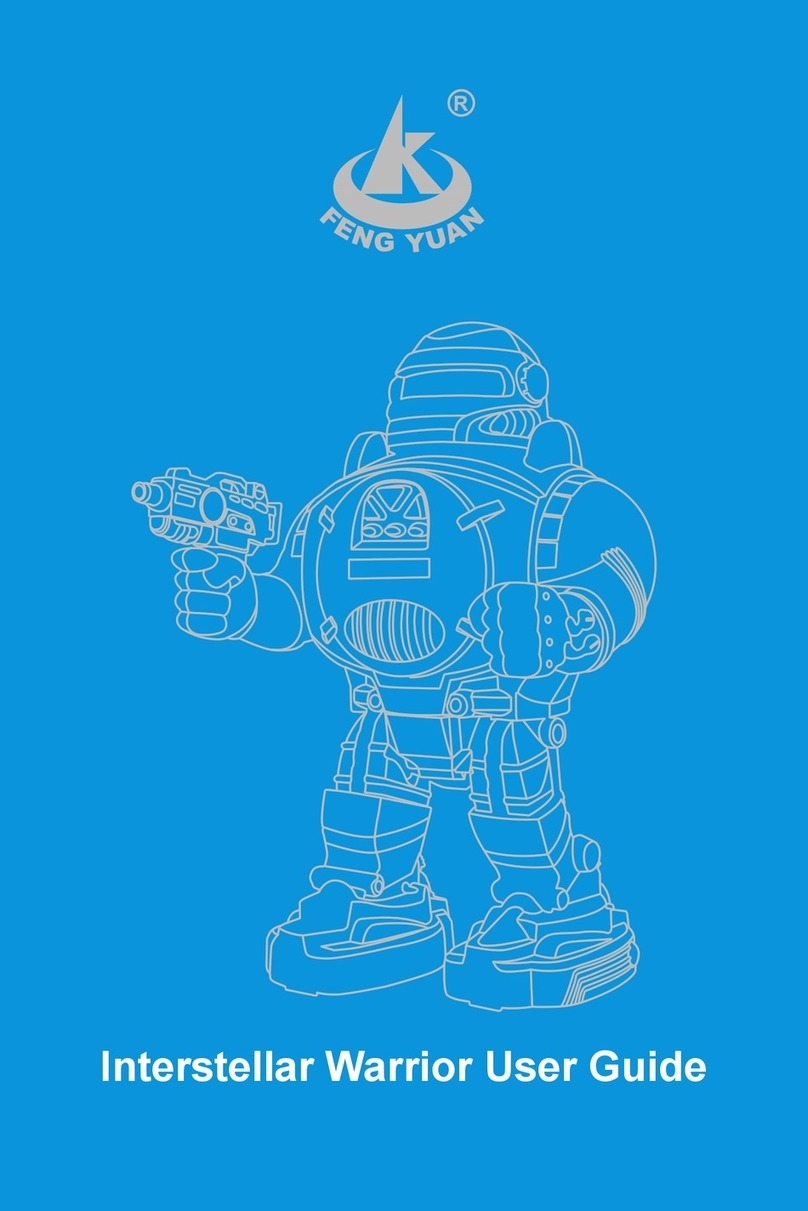
Safety Instructions
S-3
3.5.1 Release device
The robot mechanics are not supplied with an release switch to control the brakes of the motors.
WARNING
• MOUNT A RELEASE SWITCH ON THE MACHINE SO THE ARMS (MOTOR) OF THE ROBOT COULD BE MANUALLY
MOVED.
• MOVING AN AXIS WITH AN IMPROPERLY WORKING RELEASE SWITCH CAN DAMAGE THE MOTOR BRAKE. THIS
CAN RESULT IN PERSONAL INJURY AND MATERIAL DAMAGE.
• BEFORE RELEASING THE BRAKE, YOU HAVE TO BE SURE THAT NO ONE IS IN THE HAZARD AREA OF THE ROBOT.
3.5.2 Transport
The prescribed transport position of the robot must be observed. Transportation must be carried out in accordance with
the transportation instructions or assembly instructions of the robot.
WARNING
• ONLY USE AUTHORIZED HANDLING EQUIPMENT WITH A SUFFICIENT LOAD-BEARING CAPACITY TO TRANSPORT
THE ROBOT.
• WEAR SUITABLE PROTECTIVE CLOTHING IF NECESSARY.
3.5.3 Assembly and start-up
Before starting up systems and devices for the first time, a check must be carried out to ensure that the system and
devices are completed and operational, that they can be operated safely and that any damage is detected.
The valid national or regional work safety regulations must be observed for this check. The correct functioning of all
safety circuits must also be tested.
The following tests must be carried out before start-up and recommissioning. It must be ensured that:
• The robot is correctly installed and fastened in accordance with the specifications in the assembly instructions.
• There are no foreign bodies or loose parts on the robot.
• All required safety equipment is correctly installed and operational.
WARNING
• A WRONG INSTALLED ROBOT MAY THROW OFF HIS ARMS.
• WEAR SUITABLE PROTECTIVE CLOTHING IF NECESSARY.
3.5.4 Maintenance and repair
After maintenance and repair work, checks must be carried out to ensure the required safety level. The valid national
or regional work safety regulations must be observed for this check. The correct functioning of all safety circuits must
also be tested.
The purpose of maintenance and repair work is to ensure that the system is kept original or, in the event of a fault, to
return the system to an operational state. Repair work includes troubleshooting in addition to the actual repair itself.
The following safety measures must be carried out when working on the robot:
• Switch of the machine (system) where the robot is built-in (e.g. with a padlock) to prevent it from being switched on
again
• Label the machine (system) with a sign indication that work is in progress. This sign must remain in place, even
during temporary interruptions to the work.
• The emergency stop from the machine (system) must remain active. If safety functions or safeguards are deactivated
during maintenance or repair work, they must be reactivated immediately after the work is completed.
